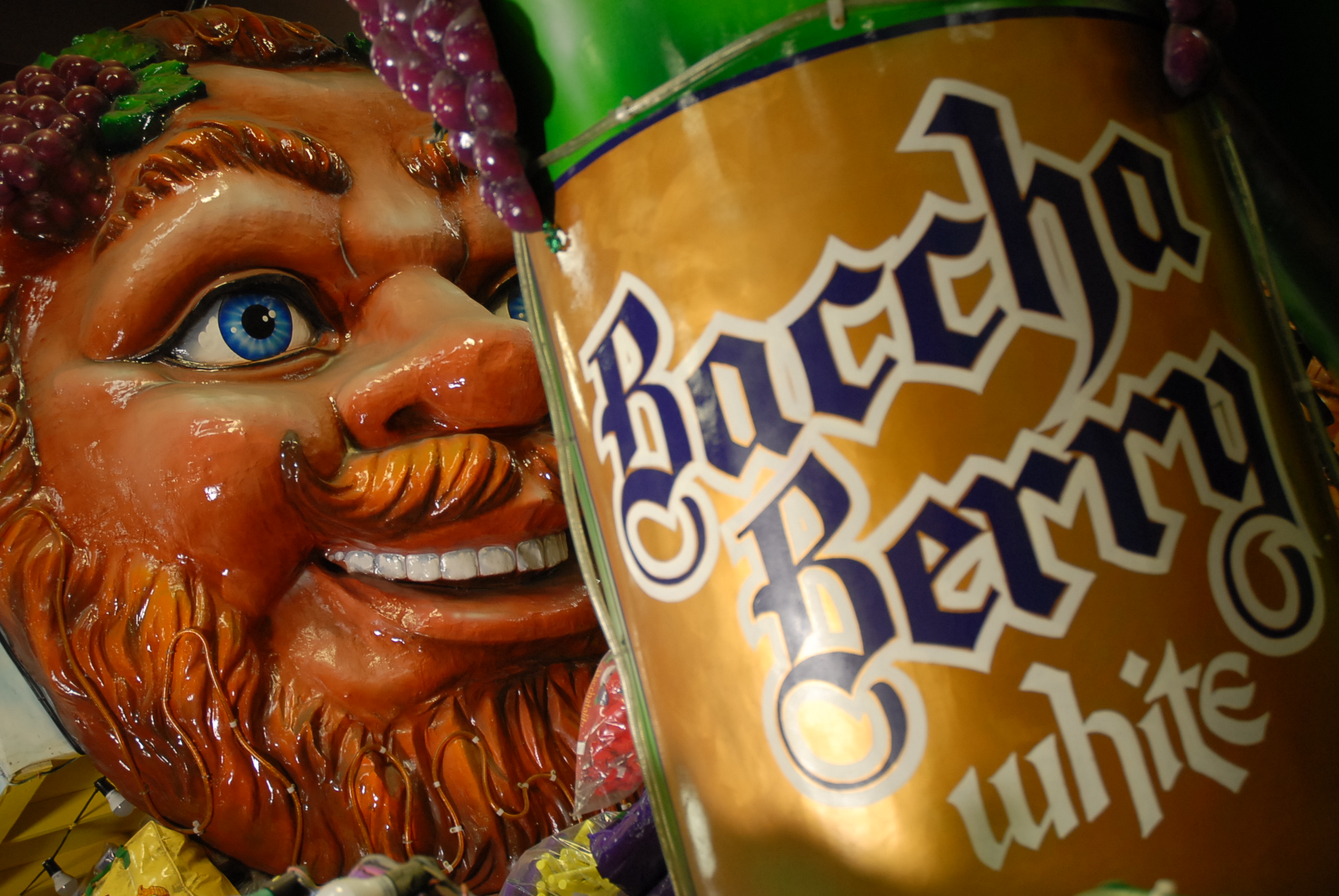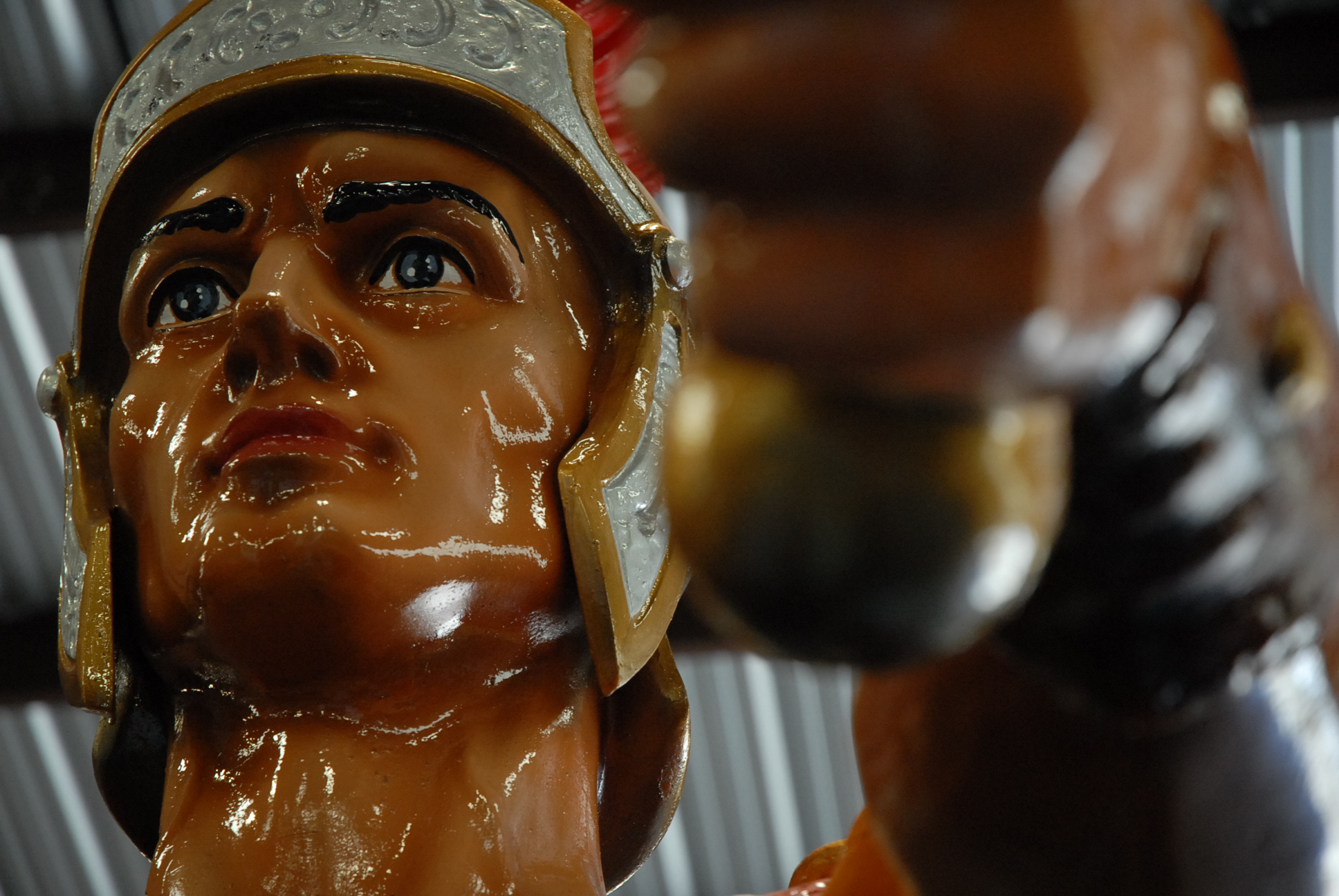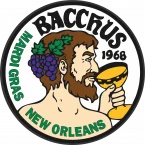A Mardi Gras Tradition
Our History
The Krewe of Bacchus parade was founded in 1968 by a handful of New Orleans business leaders whose dream was to revitalize Carnival. However, the seeds of the Krewe of Bacchus were actually sown two decades before the present carnival organization was founded.

Milestones
Bacchus Parade Founded
Bacchus’ First Parade
First Krewe to Parade Super-floats Through the French Quarter
First Krewe to Parade Through the Rivergate (Now the Harrah’s Casino)
Bacchus Introduces Its First Two Signature Floats: King Kong in 1972 and Bacchasaurus in 1975
Bacchus Parade is Nationally Televised as a Part of Bob Hope’s Reign
Bacchus Introduces Its Third Signature Float: Queen Kong
The original Krewe of Bacchus was the brainchild of Owen Edward Brennan, Sr., a true visionary. Brennan, owner of the Absinthe House, a famous bar on Bourbon Street, and later founder of Brennan’s Restaurant on Royal Street, was also the father of the first Captain of The Krewe of Bacchus, Owen “Pip” Brennan, Jr.
In the late 1940’s, Brennan realized that a large segment of his clientele was seasonally unhappy-namely tourists to the Mardi Gras. At that time, Carnival balls at Mardi Gras were predominately closed to anyone outside of New Orleans’ society circles.
So, In 1949, Brennan decided to spend an enormous amount of money, buck the entrenched New Orleans Society, and revolutionize the Mardi Gras. He did so by creating a brand new Krewe, called the Krewe of Bacchus, wide open to tourists.
Brennan staged two Bacchus Carnival balls, one in 1949 and the other in 1950 before his death in 1955. Regrettably, he did not live to see his idea develop into a new and lasting form.
Fast forward to 1968. For years, Carnival in New Orleans had been losing its luster slowly but surely. There was a lot of talk around town about what should be done to give a spark to the celebration.
Early in 1968, Owen “Pip” Brennan, Jr., son of the late Brennan, held a meeting at Brennan’s Restaurant to address this problem. What emerged was a rebirth of the vision his father conceived almost 20 years earlier: The Krewe of Bacchus.
It was decided that the Krewe of Bacchus would break with Carnival tradition by staging a Sunday night parade that would be the highlight of the Carnival season. Its floats would be bigger and more spectacular than anything previously seen in Carnival. Furthermore, Bacchus decided to have a national celebrity king lead its parade, breaking ranks with 113 years of Carnival tradition.
On Sunday, February 16, 1969, the Krewe of Bacchus staged its first Mardi Gras parade. The theme was “The Best Things In Life”, and the procession was led by celebrity king Danny Kaye. The 250 member, 15 float entourage took to the streets of New Orleans showering thousands of spectators with over a million strings of beads and 300,000 doubloons. The new parade was a smashing success.
The Krewe of Bacchus had left a lasting mark on the City of New Orleans and had proven to be the boost that the Carnival season so desperately needed.
Now, with more than 1,500 members and 33 animated super-floats, the Krewe of Bacchus is revered as one of the most spectacular Krewes in Carnival history.
Pip Brennan served as Captain of The Krewe of Bacchus until 2014 and was succeeded by his son, Clark Brennan. The Captain oversees each detail with great pride and meticulous perfection. Like his grandfather and father, this third generation Brennan shares the same love of Mardi Gras and New Orleans.
Bacchus, God of Wine and Vegetation
Bacchus, in Greek mythology, was the god of wine and vegetation. He showed mortals how to cultivate grapevines and make wine.
As the son of Zeus, Bacchus is usually characterized in one of two ways:
First, as the god of vegetation specifically of the fruit of the trees. Eventually, he became the popular Greek god of wine and cheer, and wine miracles were reputedly performed at certain of his festivals. According to tradition, Bacchus died each winter and was reborn in the spring. To his followers, this cyclical revival, accompanied by the seasonal renewal of the fruits of the earth, embodied the promise of the resurrection of the dead.
The yearly rites in honor of the resurrection of Bacchus gradually evolved into the structured form of the Greek drama, and important festivals were held in honor of the god, during which great dramatic competitions were conducted.

Bacchus Parade Canceled Due To New Orleans Police Department Strike
Bacchus Introduces Its Fourth Signature Float: Baby Kong
Bacchus Introduces Its Fifth Signature Float: The Green Bacchagator
Bacchus Moves Its Annual Rendezvous To The Ernest N. Morial Convention Center From The Rivergate
Rich History Continues
Click on the arrows to explore our tradition
Bacchus Introduces Its Sixth Signature Float: The Bacchawhoppa (Whale)
Bacchus Re-Introduces Flambeaux Carriers To The Bacchus Parade
Bacchus Celebrates Its Silver Anniversary
Bacchus Modifies The Green Bacchagator Float To Resemble The Rare White “Leucisitic” Alligator, A Beloved Attraction At The New Orleans Aquarium Of The Americas
Bacchus Launches Its First Internet Site On The World Wide Web
Bacchus Introduces The First “Mass Quantity” Hand-Painted Medallion Bead To Mardi Gras
Bacchus Introduces The First “Talking” Medallion Bead To Mardi Gras
Bacchus Parade Is Nationally Televised As A Part Of Larry King’s Reign As Bacchus XXXIII
The Bacchagator Float Returns To Its Original Green Color
Bacchus & Endymion Parade Back-To-Back On The Same Night, Creating The Largest Single Night Of Super-Krewe Parades In Mardi Gras History
Bacchus Celebrates its 40th Anniversary
Bacchus Celebrates its 50th Anniversary
Bacchus Introduces the Bacchaneer Signature Float
King Kong, Queen Kong, and Baby Kong are redesigned into the Baccha-Kong Family Float
